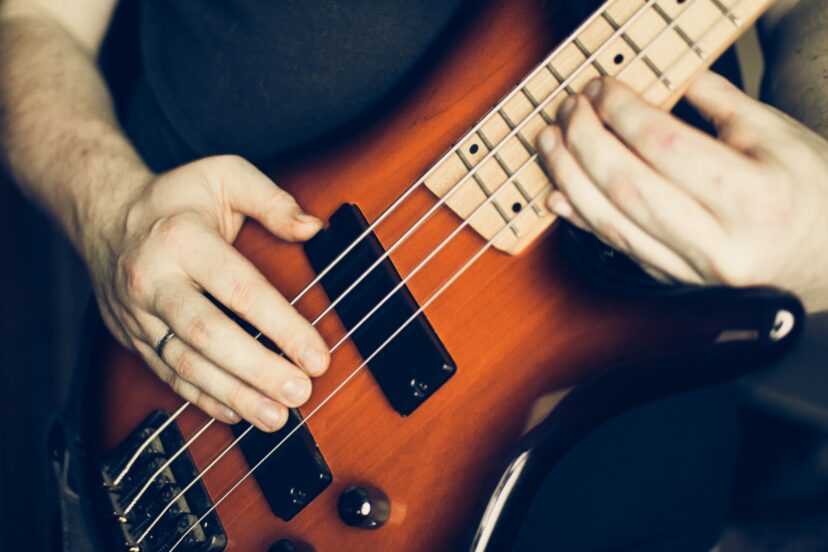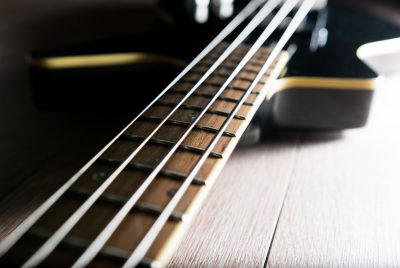Bass Guitar Chords: A Comprehensive Guide
Introduction to Bass Guitar Chords
Let’s dive into the exciting world of bass guitar chords. Yes, you heard me right, chords on a bass guitar. For those who are unfamiliar, this might seem a bit odd, but it’s really just a further evolution of your playing knowledge and skills.
The Role of Chords in Music
What Are Chords?
So, what is a chord? A chord, in a nutshell, is a group of notes that are played together simultaneously. Chords are the very essence of harmony in music, adding richness and texture. But like other techniques, it should only be used where it adds tasteful accents and fills.
The Function of Bass Guitar Chords in a Song
In terms of bass guitar chords, it’s a bit unique. While bass generally focuses on individual notes, creating the foundation of a song, bass chords add depth and rhythm. They can provide an interesting twist to a simple bassline or even a whole new level of complexity if you dare!
The Structure of Bass Guitar Chords
Root, Third, Fifth: The Building Blocks of Chords
Understanding the structure of a bass chord is like learning to build with Lego. There are three main pieces: the root, third, and fifth. The root is the primary note of the chord, and the third and fifth are the notes that follow. Sound complex? Not really. Once you’ve got the hang of it, you’ll be building chord structures as easily as a child creates castles with Lego bricks.
Types of Bass Guitar Chords
Major Chords
Major chords on the bass guitar embody the bright, positive sound that forms the backbone of countless musical pieces across genres. A major chord, at its core, is constructed from the root note, the major third, and the perfect fifth of a major scale. This triadic formula creates a harmonically rich and uplifting sound characteristic of the major chord’s optimistic quality.
On the bass guitar, playing full chords can be less common due to the instrument’s role in providing low-end support and its string spacing. However, bassists often imply chords through their choice of notes in bass lines, playing the root note predominantly and incorporating the third and fifth at key moments to outline the chord’s harmony. This technique allows the bass to define the chord progression’s harmonic foundation effectively while maintaining clarity in the mix.
Understanding and utilizing major chords enables bass players to contribute significantly to the musical texture and emotional direction of a song. Whether playing arpeggios, incorporating chord tones into melodic lines, or playing chords directly in higher registers or solo contexts, the knowledge of major chords enhances a bassist’s ability to support and enrich the music.
For bassists, mastering major chords involves not just memorizing shapes and patterns but also developing an ear for their distinctive sound. This understanding allows for creative bass line construction, improved improvisation, and more dynamic interactions with other musicians, making major chords a fundamental aspect of a bass guitarist’s skill set.
Minor Chords
Minor chords on the bass guitar offer a deep, emotive sound that adds a layer of complexity and emotional depth to music. Constructed from the root note, the minor third, and the perfect fifth of a minor scale, minor chords produce a melancholic and sometimes introspective tone, contrasting with the bright and uplifting nature of major chords. This triad creates a sound that is essential for conveying feelings of sadness, longing, or reflective moods in various musical genres.
In the context of bass guitar playing, while directly playing chords is less common due to the instrument’s role and tonal range, bassists effectively imply minor chords within their bass lines. They do this by focusing on the root note and selectively incorporating the minor third and fifth to outline the chord’s character, thereby establishing the harmonic foundation of the music.
Understanding minor chords is crucial for bass players aiming to enhance their musical expression and versatility. By integrating the minor third and fifth into bass lines and fills, bassists can significantly influence the emotional impact and harmonic richness of a piece. Whether through arpeggiated patterns, melodic embellishments, or rhythmic grooves, the knowledge and application of minor chords enable bassists to craft more nuanced and expressive parts.
For those mastering the bass guitar, developing a solid grasp of minor chords—along with an ability to distinguish their sound and use them creatively in context—is key to unlocking a wider palette of musical possibilities. This understanding not only aids in the construction of compelling bass lines but also enriches a bassist’s contribution to the overall texture and mood of the music.
Seventh Chords
Seventh chords on the bass guitar introduce a layer of harmonic sophistication and depth, enhancing the musical palette available to bassists. These chords extend the basic triad (root, third, and fifth) by adding a seventh interval above the root, creating a richer and more complex sound. There are several types of seventh chords, including major seventh, minor seventh, dominant seventh, and half-diminished seventh, each offering a unique tonal quality and emotional resonance.
In bass playing, directly voicing full seventh chords can be challenging due to the instrument’s low register and the nature of its role in providing rhythmic and harmonic foundation. However, bassists often imply these chords within their lines by focusing on key notes that define the chord’s character, such as the root, third, and especially the seventh, whether it’s major, minor, or diminished. This approach allows the essence of the seventh chord to be conveyed, enriching the harmonic texture of the music.
The inclusion of the seventh interval adds a sense of tension and release, sophistication, or bluesy feel, depending on the type of seventh chord used. For instance, the dominant seventh chord is central to blues and jazz, providing a distinctive tension that seeks resolution, while major seventh chords offer a smooth, jazzy sound that evokes a sense of completeness and emotional depth.
For bass guitarists, understanding and utilizing seventh chords is vital for contributing to more complex chord progressions, enhancing improvisation, and engaging more deeply with the harmonic fabric of the music. Mastery of these chords enables bassists to craft bass lines that are melodically interesting and harmonically rich, adding a new dimension to their playing and to the overall musical experience.

Playing Techniques for Bass Guitar Chords
Now, we understand what bass guitar chords are, but how do we play them? For bass players, it’s not as straightforward as it is for guitarists, but with practice and the right technique, you can create beautiful, rich sounds.
Mastering the Bass Guitar Chords
Tips for Improving Chord Play
Here are some of my favorite tips to improve chord play. First, make sure you’re practicing regularly and consistently. Second, focus on your fingering technique, ensuring you have the right pressure and placement. Lastly, listen! Use your ears to identify the tones and learn from your mistakes.
Exercises for Practice
A great way to practice is by learning and playing along with your favorite songs. You can also practice scales, moving from the root note up to the third, fifth, and even seventh. Try playing these scales in different keys to become familiar with the fretboard. And always keep ypur bass in tune to allow for the best development of your ear.
The Role of Bass Chords in Different Music Genres
Bass chords play a crucial role across various music genres. In rock, they add depth and power. In jazz and blues, they bring complexity and nuance. In pop, they can provide a rhythmic backdrop that drives the song. Whatever genre you’re into, understanding and mastering bass guitar chords can elevate your playing significantly.
Conclusion
So, there you have it! A comprehensive guide to understanding and playing bass chords. Remember, learning any new skill requires patience and persistence. Keep practicing, stay curious, and don’t forget to enjoy the journey. Before you know it, you’ll be creating beautiful bass harmonies that resonate with listeners and fellow musicians alike.
FAQs
1. Can you play chords on a bass guitar?
Absolutely! While it’s not as common as in six-string guitar playing, bass chords can add a whole new level of complexity and richness to your bass lines.
2. What is the easiest chord to play on a bass guitar?
Generally, power chords (root and fifth) are the easiest to play as they involve only two notes. Major and minor chords require more practice but are still quite approachable.
3. How can I improve my bass guitar chord play?
Consistent practice is key. Also, learning scales and understanding the theory behind chords can help you improve significantly. Listen to your favorite songs and try to pick out the bass chords.
4. Are bass guitar chords important in all music genres?
While the use of bass guitar chords can vary by genre, they can add richness and depth in any style. They are particularly prominent in genres like jazz and blues.
5. Can I play bass guitar chords with a pick?
Yes, you can. Playing with a pick can give you a sharp, distinct sound. However, be careful not to strum all the strings as you would on a guitar. Selective picking is key when playing chords on a bass.




